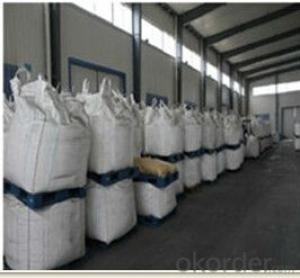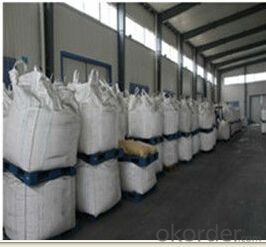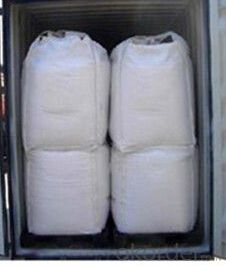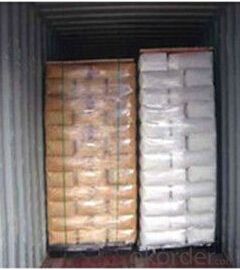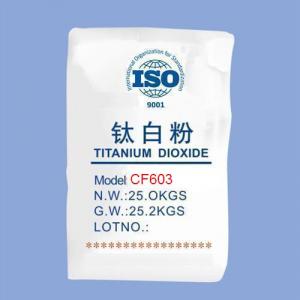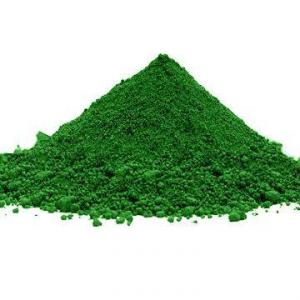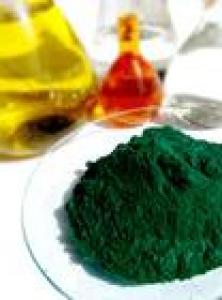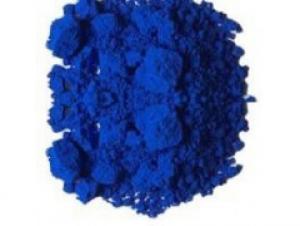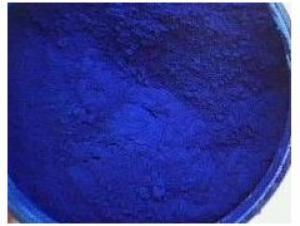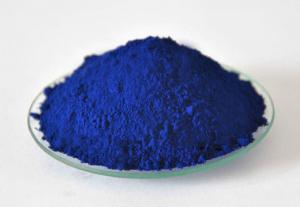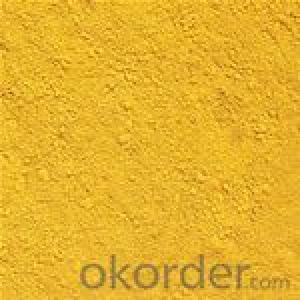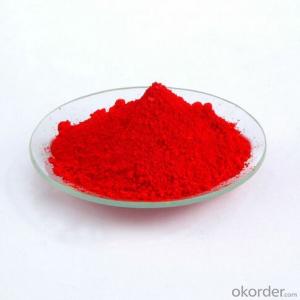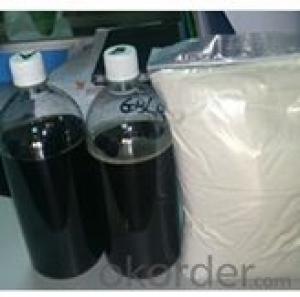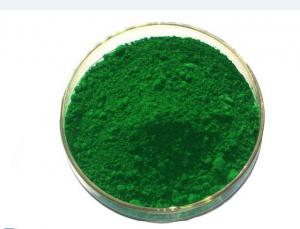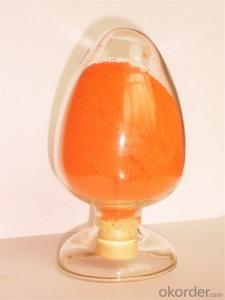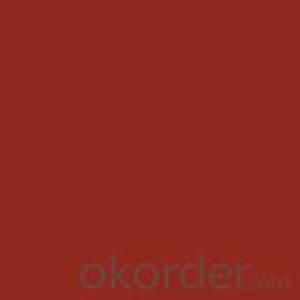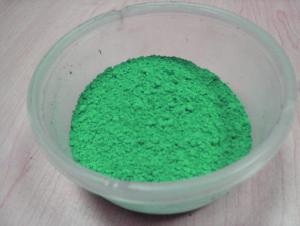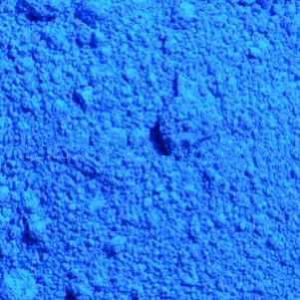Textile chemicals sodium alginate Chemical Auxiliary Agent
- Loading Port:
- Shanghai
- Payment Terms:
- TT OR LC
- Min Order Qty:
- 1 bottle
- Supply Capability:
- 10000 bottle/month
OKorder Service Pledge
OKorder Financial Service
You Might Also Like
Quick Details
| Classification: | Chemical Auxiliary Agent | CAS No.: | 9005-38-3 | Other Names: | Alginic Acid Sodium Salt |
| MF: | C5H7O4COONa | Purity: | 89% | Place of Origin: | Shandong China (Mainland) |
| Type: | Activated Carbon | Usage: | Textile Auxiliary Agents | Brand Name: | xinruitai |
| Model Number: | cp001 | Color: | brown or Yellowish | Application: | Textile Auxiliary Agent |
| Grade Specification: | Printing Paste | Dye: | Activated Dyes | PH Value: | 6.5-7.5 |
| Ca Content %: | 3% max |
Packaging & Delivery
| Packaging Detail: | 25kgs per bag |
| Delivery Detail: | 2 weeks |
Specifications
have stock
seaweed smell
different viscosity
different mesh
Textile chemicals sodium alginate
Printing paste: Sodium Alginate is an ideal printing paste. It is yellowish powder. It contains positive charge,
which has mutual repulsion with electro positivity contained in reactive dyestuffs, yet it won't be covalent
bonding with reactive dyestuff, and that makes dyestuffs stick to paste.
*Sodium Alginate is widely applied to different kinds of textile printing, such as cotton, linen, silk and synthetic
fibre.It makes printing textile to attain bright colors, sharp definition and good color yield, high color fixing and
soft hand feeling.Liquid mixture with Sodium Alginate has good plasticity and flexibility. Owing to its perfect
effect on textile printing and low cost, Sodium Alginate is popular in application.
- Q: Can some one suggest chemical pigments that can be easily made from chemicals available in a chemistry lab for a project?I need the name of the pigment, reactants required and chemical equations of reactions involved.I need atleast 5 pigments
- Some pigments easy to make in a school laboratory: 1) Calcium carbonate: Mix solutions of calcium chloride and sodium carbonate : CaCl2(aq) + Na2CO3(aq) → CaCO3(s) + 2NaCl(aq) filter off and dry the calcium carbonate 2) Barium carbonate Exactly as above , but start with barium chloride 3) Calcium sulphate Mix solutions of calcium chloride and sodium sulphate: CaCl2(aq) + Na2SO4(aq) → CaSO4(s) + 2NaCl 4) Barium sulphate Use barium chloride instead of calcium chloride . 5) Satin white is another interesting pigment: Mix solutions of aluminium sulphate and calcium hydroxide with strong stirring , You get a paste which is a mixture of aluminium hydroxide and calcium sulphate . There is no specific formula because what you get depends on how you mix. Do not try and dry this out to get a dry pigment - it does not work. There are 5 white pigments that you can easily make - but remember to wear proper protective clothing when working with all chemicals
- Q: I always hear about pigments from MAC and Loreal, etc. and I am confused about what exactly they are.So can someone please THOROUGHLY explain what they are and what they can be used for?
- Pigment okorder Pigments can be used for many different cosmetic purposes. eyeshadow blushes added to a clear gloss you make a brand new lip gloss added to clear nail polish base. a hilight color, added to body spray for shimmer added to gel for a tinted gel the list goes on and on. i hope this helps!
- Q: What is the difference between a pigmented eyeshadow and a non - pigmented one?
- Pigment is the amount of saturated color that will come up when you touch the eye-shadow with your finger (or apply it with a brush) A poorly pigmented dark purple eye shadow may leave only a soft wash of sheer lavender pigment on the eye, and it may require you to apply several layers to achieve a color similar to how the shadow looks in the pan. A highly pigmented shadow has great color payoff, and looks (on the eyes) the same as it does in the pan, and doesn't require lots of packing on the color. Highly pigmented eye shadows are preferred by most people because they are quicker, and easier to work with and stand out. Poorly pigmented eye shadows, however, may be great for younger girls who are just starting to wear makeup, girls with very fair skin, or people who like Subtle makeup An example of poorly pigmented eye-shadow would be the Color Workshop palettes often sold at drugstores around Christmas, they are fine for beginners, but for people who want dramatic makeup they will not be able to achieve the look with shadows of this quality. Wet n wild 3 pan palettes, and most of the 8 pan palettes are very pigmented, as are L'Oreal infallable eyeshadow-pots, MAC eyeshadows, urban decay eye-shadows and most of the higher end shadow brands. Some eye-shadows targeted towards older women, such as Elizabeth Arden, although pricey, lack pigmentation.
- Q: What is a pigment and their function in photosynthesis?
- a pigment is any substance that absorbs light. chlorophyll, the green pigment common to all photosynthetic cells, absorbs all wavelengths of visible light except green, which it reflects to be detected by our eyes. black pigments absorb all of the wavelengths that strike them. white pigments/lighter colors reflect all or almost all of the energy striking them. pigments have their own characteristic absorption spectra, the absorption pattern of a given pigment. a photosynthetic pigment or chloroplast pigment is a pigment that is present in chloroplasts or photosynthetic bacteria. its function is to capture the light energy necessary for photosynthesis. :)
- Q: Does anyone know its chemical formula or constituents ?
- Pigments are generally used for overdipping or decorating candles. Pigments do not fade and do not migrate/bleed, but pigments will clog wicks if used to color solid-colored candles. Pigment flakes are clean and easy to use and give vivid and brilliant colors. They are safe for the candlemaker and for the candlemaker’s customers. The pigment flakes comply with OSHA, TSCA and EN 071 (part 3) legislation. Pigments are insoluble in the medium they are coloring. Pigments, therefore, are not soluble in wax. They color the wax by dispersion. This means that pigments have to be distributed evenly throughout the wax, or dispersed in the wax, in order to color it (versus dyes which are soluble in wax and become a part of the wax to color it). Mixing, therefore, is very important. Usage and Dosage Instructions Dissolve pigments flakes in your wax formulation at approximately 185F - 85C. It is recommended to pre-disperse the required amount of color (see dosage chart) in a small amount of the dipping wax in a ratio of 1:5 color to wax. This should be done at 185F - 85C, using an electric mixer will disperse the color more quickly. Once the pigment is well dispersed, add it to the remaining dipping wax. Stir the dipping wax well before starting production and after each production break. Overdipping Dosage 2 dips : 1% by weight of wax formulation 1 dip : 1.5% by weight of wax formulation For color consistency, always add the same amount of color to your dipping wax. Use a scale to weigh the components of your dipping formulation. Always dip candles at the same temperature, temperature variations will result in color deviations. Too hot a dipping wax will make the shade of color on the candle appear lighter. Too cold a dipping wax will make the shade of color on the candle appear darker. Any variations in the overdipping wax used may result in a change of color on your finished candle. PROPER MIXING IS NECESSARY TO ACHIEVE UNIFORM DISPERSION OF PIGMENTS
- Q: 1.what is pigment2.what is it for ( whats its purpose?)3.what are other things people do with it
- Pigment is a loose powder that has highly concentrated color. They come in different finishes like matte or shimmery. You can use them as eye shadows and such, which is what most people do with them. They show up better and the metallic ones can be foiled (more vivid color and looks like metal almost) if you use them wet by putting a little bit of mixing medium or eye drops on your brush before dipping it in the pigment and applying it. They can also be used as lip colors by mixing with a clear lipgloss, or eyeliner if you use them wet or mix them with something like MAC's special eyeliner mixing medium. They also make a mascara mixing medium that can be used with pigments. Pigments really are a handy, universal product to have! Keep in mind that some pigments are not safe for use in the eye and/or lip area. If you look at MAC's website where the pigments are, you can check out the specifics about that under View Recommended Use. Also, if you use pigments wet, it's best to get a little bit of it in the jar lid, then dip the brush in it. That way you won't dampen and ruin the pigments in the jar, and moisture in the jar could promote the growth of bacteria.
- Q: I am planning on purchasing MAC, but what r the differences... thanks to all...I want to have an idea before I head to the mall.
- Pigments are really loose eye powders. For MAC, it's kind of like 'balls of sparkles' If you want really sparkly eyes, you'd probably want this. Dip your eye makeup brush in water, then in the pigment. I find this to work well, and it really compliments the product. It's best applied over a dark eyeshadow or primer. An eyeshadow is a packed together powder. (As you probably know) MAC eyeshadow comes on bright and radiant. So if you just want a simple look, this product works well. I suggest MAC - PaintPot. It's a creamy eyeshadow that is easy to blend. It's not waterproof, but it's difficult to rub off. It can act as a primer too.
- Q: what is the function of pigment molecules in photosynthesis?
- WELL to be exact cuvette 2: to observe the role of photosynthesis with chromatin cuvette 3: to observe the role of photosynthesis with UV rays cuvette 4: to observe the stability of the chloroplasts cuvette 5: to observe the reaction of the H2O synthesis
- Q: So i'm writing up a lab report and i'm just a little confused on why scarlet, rosy, cinnabar and vermillion mutants contain the same kinds and amounts of pigments found in wild-type according to paper chromatography. Since they're mutants shouldn't it be different? I don't understand how i'm going to explain that they are mutants when it appears that they have the same phenotype as wild-type. Thank you so much for your help!
- Man pigments determine the colour of the eye. If the composition of pigments is same in all the flies,how can the colour in which their eyes look differ?isn't this a contradiction?i suspect the accuracy of The chromatography test because even a very very slight change in the amount of pigment can significantly change the colour. The phenotype is always different in mutants due to different genotype. in genotype is taken for granted if a change in phenotype is present. Wait just got over into a nice point. Sometimes even if the pigment composition being same different colours m8 be produced due to different allotropes or iro of the same pigment might have different colours!though allotropes(not isomers) have same composition but differ in,their post translational changes r different.since post translational changes r indirectly influenced by genes.this completely explains this case.
- Q: How are plant pigments involved in photosynthesis?
- Plant pigments - as other pigments - interact with light to absorb only certain wavelengths. In plants the different sorts of pigments are useful to absorb available wavelengths of light and enable photosynthesis in shadow, in bright sunshine, in deep sea etc.: each pigment reacts with only a narrow range of the spectrum, there is usually a need to produce several kinds of pigments, each of a different color, to capture as much as possible of the sun's energy.
Send your message to us
Textile chemicals sodium alginate Chemical Auxiliary Agent
- Loading Port:
- Shanghai
- Payment Terms:
- TT OR LC
- Min Order Qty:
- 1 bottle
- Supply Capability:
- 10000 bottle/month
OKorder Service Pledge
OKorder Financial Service
Similar products
Hot products
Hot Searches
Related keywords
